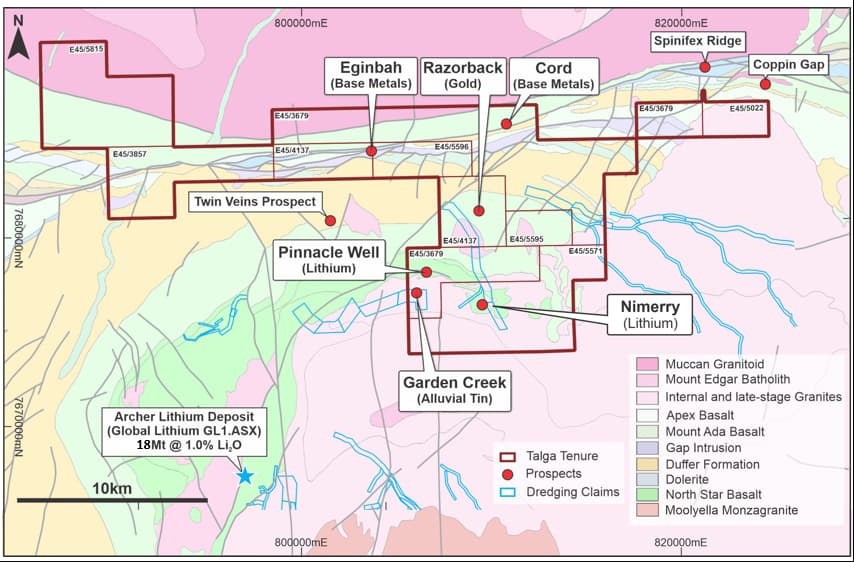Talga
Talga Project
At Octava’s East Pilbara Talga project, exploration is primarily targeting lithium and gold. The Talga project covers an area of approximately 202km2 located 30km to the northwest of Marble Bar. Talga comprises 7 granted Exploration Licences all of which Octava owns 100%. A number of lithium and gold prospect targets have been identified and have exhibited encouraging mineralisation.

Talga Lithium
The Talga project holds the potential for the identification and discovery of LCT type (lithium-caesium tantalum) pegmatites. The project area lies 10km to the northeast of the recently identified Archer Lithium Deposit (18Mt @ 1.0% Li2O) and occupies a similar geological setting, margining the Mt Edgar Batholith and being proximal to the Mooyella Monzagranite and other late-stage granite intrusions. These late-stage granite intrusions are considered as the source intrusions to the lithium pegmatite mineralisation in the region.
Using a systematic approach to exploration, including field reconnaissance, rock chip and soil sampling, a number of potential lithium pegmatite targets have been identified at Talga. These pegmatites are considered by the company as highly prospective and are being further investigated. These targets include the Pinnacle Well and Nimerry lithium prospects.
Talga Gold
The Talga project holds the potential for the location and discovery of orogenic lode gold deposits. The project covers one of the most prospective and mineralised Archaean greenstone terranes in the Pilbara. Both the Bamboo Creek gold deposits to the east and the Warrawoona gold mine development (Calidus Resources, ASX:CAI)) to the south are located within the same greenstone stratigraphy.
A number of gold targets have been identified and these have exhibited encouraging mineralisation. The Razorback gold prospect has recorded significant gold intersections from previous drilling but has only been drill tested over a distance of 700m of a 4km strike. A recent IP/Resistivity geophysics survey carried out over the Razorback gold prospect produced 11 significant anomalies, including 6 high priority targets that are interpreted to coincide with gold mineralisation.
